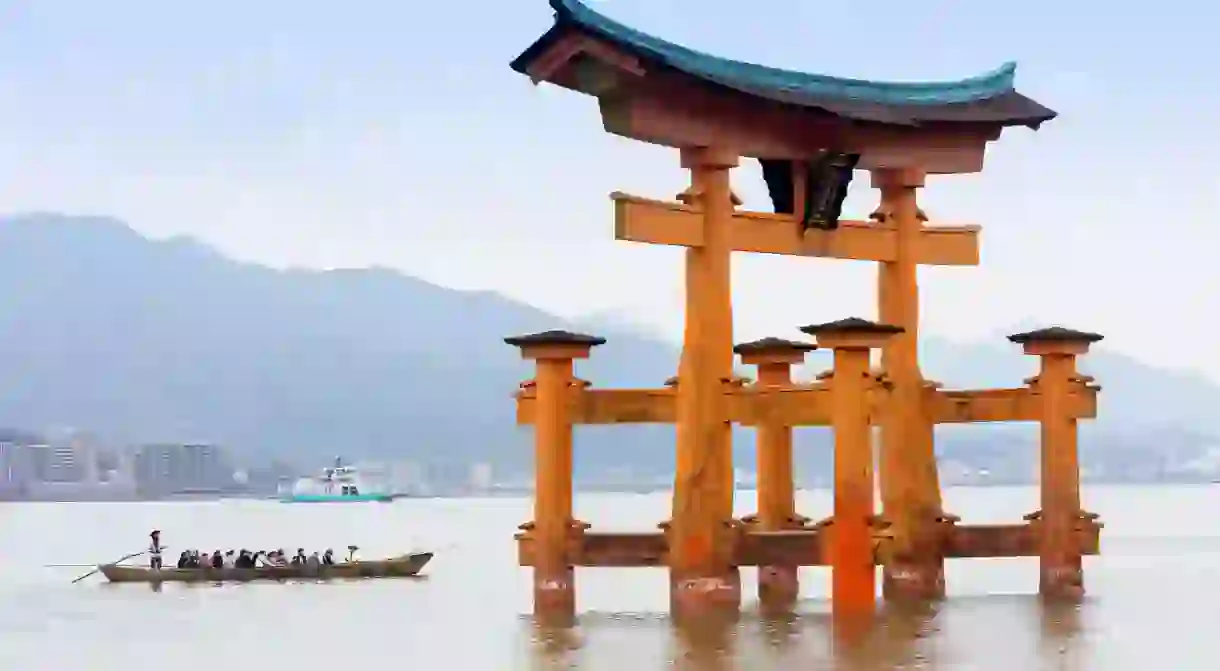The Solo Traveller’s Guide to Japan

Welcome to another world – and another whirl. Neon-drenched cities and ancient wooden temples; whizzing bullet trains and serene tea ceremonies; geishas, samurai and majestic Mount Fuji rising cinematically into the clouds. Japan is full of evocative moments. Once you experience the country’s thrilling urban centres, scenic rolling countryside and rich culture, you’re sure to fall in love. Who needs a travel partner when you’ve got a destination this enticing all to yourself?
What’s the vibe?
This is one of the easiest countries to navigate as a solo traveller. There is an excellent train network to make your trip efficient and affordable, and plenty of hotels specialising in single rooms. Most restaurants are set up well for solo diners, as are attractions. What’s more, Japan is safe and friendly, so you won’t feel intimidated on your explorations.
A Japan solo trip overview
You can pack Japan’s top two must-sees – Tokyo and Kyoto – into a week, but it’ll be rushed and you’ll miss out on some of the magical moments that come with slower exploration. Two weeks is better, and three ideal, as you’ll be able to add in day trips from Tokyo, plus a couple of days each in second city Osaka and poignant Hiroshima. You should also have time for some of Japan’s more notable islands, such as art-packed Naoshima, as well as Mount Fuji. There’s no bad time of year to visit Japan, but spring (for cherry blossom) and autumn (for leaf turn) are two of the most popular.

Where to stay in Japan as a solo traveller
Japan is famous for its ryokans – traditional inns with woven tatami mat floors, sliding shoji doors and futon mattresses. Ryokans are best experienced in the countryside, where they might also come with onsen (hot springs) and half-board meals with elaborate multi-course menus. In cities, accommodation tends to be more modern, from budget business hotel chains to elaborate international five-star brands. Solo travellers love the popular, inexpensive capsule hotels, where self-contained pods sleep just one.

What to do in Japan as a solo traveller
Even with three weeks you’ll have to make a careful edit of what you’d like to see and do in Japan. There is more here than could fill years of exploration. Don’t miss these amazing moments….
Sing karaoke in Tokyo
From the glitzy shops of Shibuya to the flashy arcades of Akihabara, Tokyo majors in modernity. Immerse yourself in the jungle of neon high-rises in the city’s west, ending the day in nightlife district Kabukicho for a beer-soaked izakaya (pub) dinner and late-night karaoke.
See the temples of Kyoto
While you’ll find beautiful temples and shrines throughout Japan, ancient capital Kyoto is the country’s cultural epicentre – there are more than 2,000 to discover there. Tick off Unesco-listed Kiyomizu-dera and other highlights, then take a reflective moment at a tea ceremony.
Join TRIPS by Culture Trip’s small-group adventure Japan Rising: From Neon Lights to Rural Ryokans, and get an insider insight into Kyoto.

Marvel at Mount Fuji
Japan’s world-famous peak can be seen from as far away as Tokyo on clear days – but there’s no substitute for getting up close. In summer months you can scale it on an overnight climb, should you feel up to the challenge (you’ll need to be very fit). All year round, and especially in winter when cloud cover tends to be minimal, consider taking in Fuji-san from the lakes near its base, including Kawaguchiko.

Eating and drinking in Japan
There will be many dishes you might recognise – sushi, ramen, tempura – but unlike catch-all Japanese restaurants at home, here you’ll find each dish served up at its own specialist establishment. Most causal spots, including kaiten (conveyor-belt) sushi-ya, have counter seating with bar-style stools, so eating solo is rarely intimidating.
There are plenty more dishes to try throughout Japan, and you’ll find each destination has its own specialty. For example, Osaka is well-known for kushiage fried skewers and Hokkaido for crab.
If you are on a tight budget or are especially uncomfortable dining alone, Japanese conbini (convenience stores) and depachika (department-store food halls) nationwide serve high-quality dishes to take away.
Take a look through our carefully prepared lists of food and drink in Japan.

Getting around Japan solo
Japan’s rail network is comprehensive, and in the few areas where it does not operate, coach connections provide a well-oiled alternative. So while you could hire a car, it’s almost entirely pointless, at least for a first-time visitor.
Buy yourself a Japan Rail Pass before you depart, to be redeemed in person at a train station when you arrive in Japan. The pass covers most of the country’s major rail lines and will let you enjoy unlimited travel for the period indicated, potentially saving you hundred of pounds.
Stay safe, stay happy
Japan is a safe country, and most visits will be incident-free. Do keep in mind that the country is prone to earthquakes – even very small ones – and has previously experienced tsunamis. When you arrive in a new destination it’s good practice to familiarise yourself with the local procedures and community meeting points, just so you are prepared in the unlikely event of an emergency.
Cultural need-to-knows
While things are changing, Japan is still largely a cash-based society, especially outside of the cities. Come armed with a couple of different bank cards as some ATMs can reject foreign cards without clear reason. Tipping is not common practice in Japan and in some cases can even lead to offence.
Solo travel doesn’t have to be a lonesome affair – and in linguistically immersive places like Japan, you’ll be glad of some company. Join Culture Trip’s 12-day small-group adventure in Japan, taking in highlights including Osaka’s traditional backstreets, Tokyo’s high rises and Kyoto’s shinto shrines.













